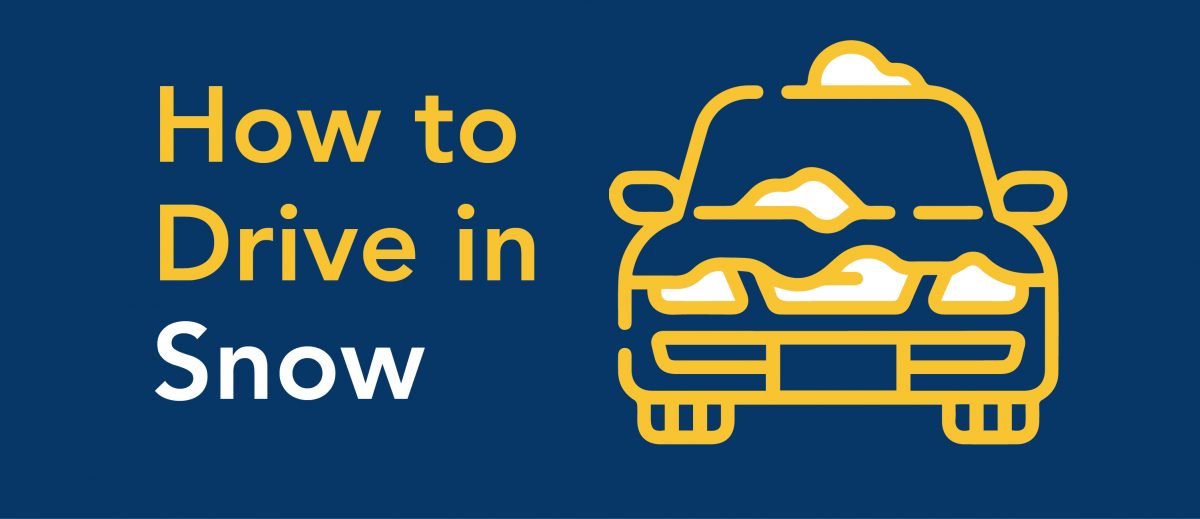Winter is an exciting time of year that brings out the kid in all of us – a time to engage in a snowball fight, build a snow fort, or go skating.
But despite bringing seasonal cheer, winter presents some difficulties when it comes to driving — but don’t fret! With the proper guidelines, you can learn how to drive in snow safely. Here are some safety precautions you can use to arrive at your destination smoothly and, most importantly, safely.
Before You Set Out
- Take a look at the route on a road monitoring app such as Google Maps or Waze and monitor local weather reports to foresee any possible disruptions. Stick to major roads since the state removal crews may likely prep and clear the highways even before snow starts.
- Remove snow & ice from the entire vehicle; including the roof, mirrors, and windows before you set out.
- Refill the windshield wiper tank with washer fluid that is concentrated for frigid winter temperatures to prevent the liquid from freezing on the glass. These products should be clearly labeled as such. It will also help if you clean and defrost the inside of the windshield.
- Inspect your wiper blades and ensure that they are clean and in perfect condition.
- Carry an emergency kit (it should contain clothing, road flares, water, and food), a warning triangle, and a high-visibility vest in case of a possible breakdown on the road.
- Once you’re ready to drive, make sure you wear comfortable shoes with clean and dry soles to prevent your feet from slipping on the pedals.
While on the Road
- There is a golden rule to follow when learning how to drive in snow. All controls on your car – including changing gears, brakes, throttle, and steering – should be operated gently and carefully.
- Maintain a safe following distance between your car and the vehicle in front to allow enough time to stop and steer. You also need to leave enough room in front of the car when climbing hills so you can maintain a uniform speed and prevent alternating gear or acceleration.
- Use your daytime running lights, especially during poor visibility, so other drivers can see you in the snow.
- When advancing toward a curve, start to brake slowly before you turn the steering wheel. Don’t be alarmed if your car tires lose grip. Simply release the pressure from the accelerator and ensure your wheels point in the path you want to drive in.
- It is best to drive on fresh snow if you’re driving behind other cars on an ungritted road. Don’t drive on the wheel tracks of other vehicles as the compressed snow will be icier than the fresh snow.
No matter how careful you drive, you can’t control other drivers, so stay alert and be defensive.
Common Problems When Driving in Snow
Fishtailing
Fishtailing is a type of skidding that occurs when the back wheels lose traction and slide instead of gripping the road, which can result in oversteering and spinning out if not handled properly.
If you begin fishtailing, follow these corrective actions:
- Drive slowly into the direction of the skid, starting the correction immediately upon sliding.
- Remove your foot from the brake pedal to reduce speed.
Black Ice
Black ice is a thin ice layer, often unseen, that glazes a surface. Although it’s not actually black, it’s slick and almost transparent, allowing the black tops of highways to show through. Use these tips to navigate safely when driving in black ice.
- Drive slowly and change into a low gear to gain more control as you drive.
- Drive in areas that give more traction. These traction areas include snow-covered spots, sandy areas, and textured ice.
- Maintain a safe distance between your car and other vehicles
- Don’t pump your brakes; avoid stopping if you can
- All things considered, never drive in dangerous icy conditions with cruise control active.
Salt on the Road
Granted, salt can help remove snow and ice from highways. However, its corrosive nature can destroy the undercarriage of your car. If extreme rust corrosion occurs, the components attached to the undercarriage can fail and eventually cause a crash.
To prevent this damage, clean the body of your car regularly to prevent salt from building up.
There you have it! Following these tips on how to drive in snow can help keep you, passengers, and other drivers safe. Better still, if the weather is bad, stay home and avoid driving in such conditions.
Stay Safe on Snowy Roads With Top Driver
As the Midwest’s premier driving school, Top Driver makes it our mission to make sure you’re prepared for everything you encounter on the winter roads.
With more than 40 locations throughout Illinois, Michigan, and Ohio, Top Driver is your best resource for driver education. Each year we provide countless hours of in-vehicle training and classes, not to mention our free blog covering best practices for road safety. If you’re looking for teen programs for new drivers, adult, or remedial courses, Top Driver has you covered.
We’re also going the extra mile to ensure a safe learning space for our students and instructors by providing remote classroom education opportunities and implementing a coronavirus vehicle sanitization process.
Call 1 (800) 374-8373 or enroll online today!
